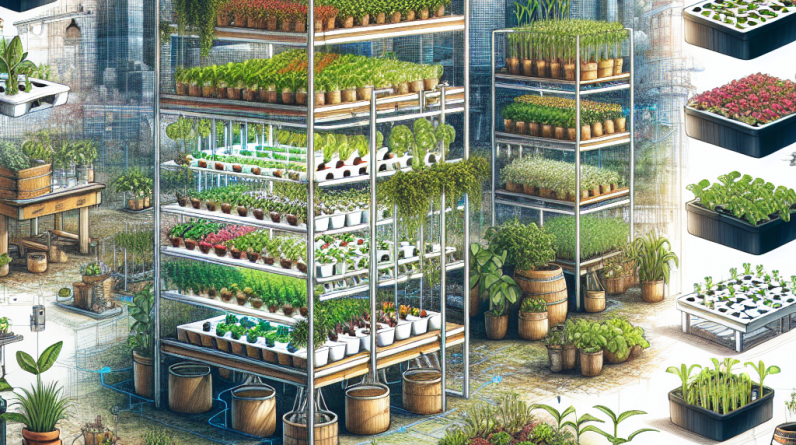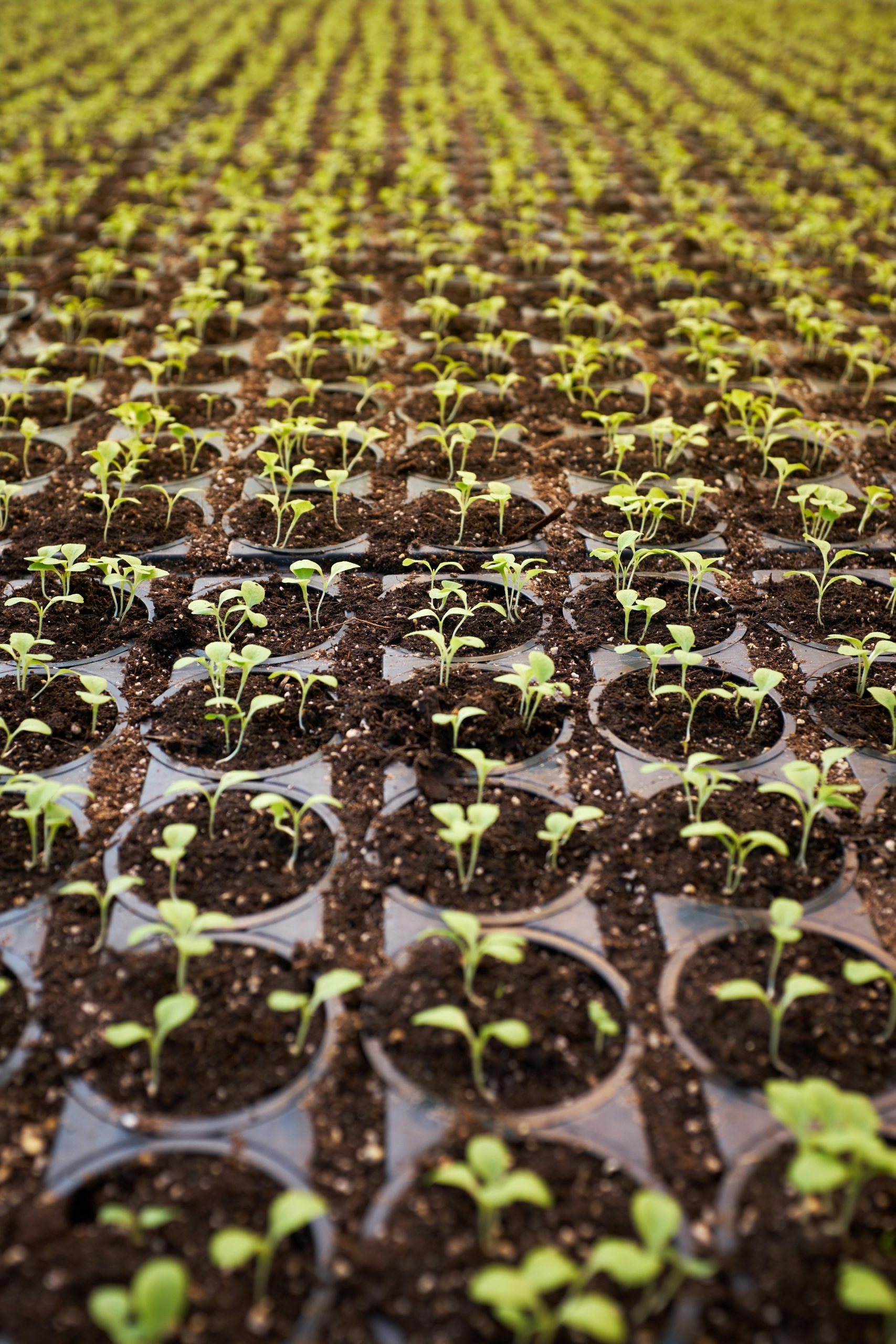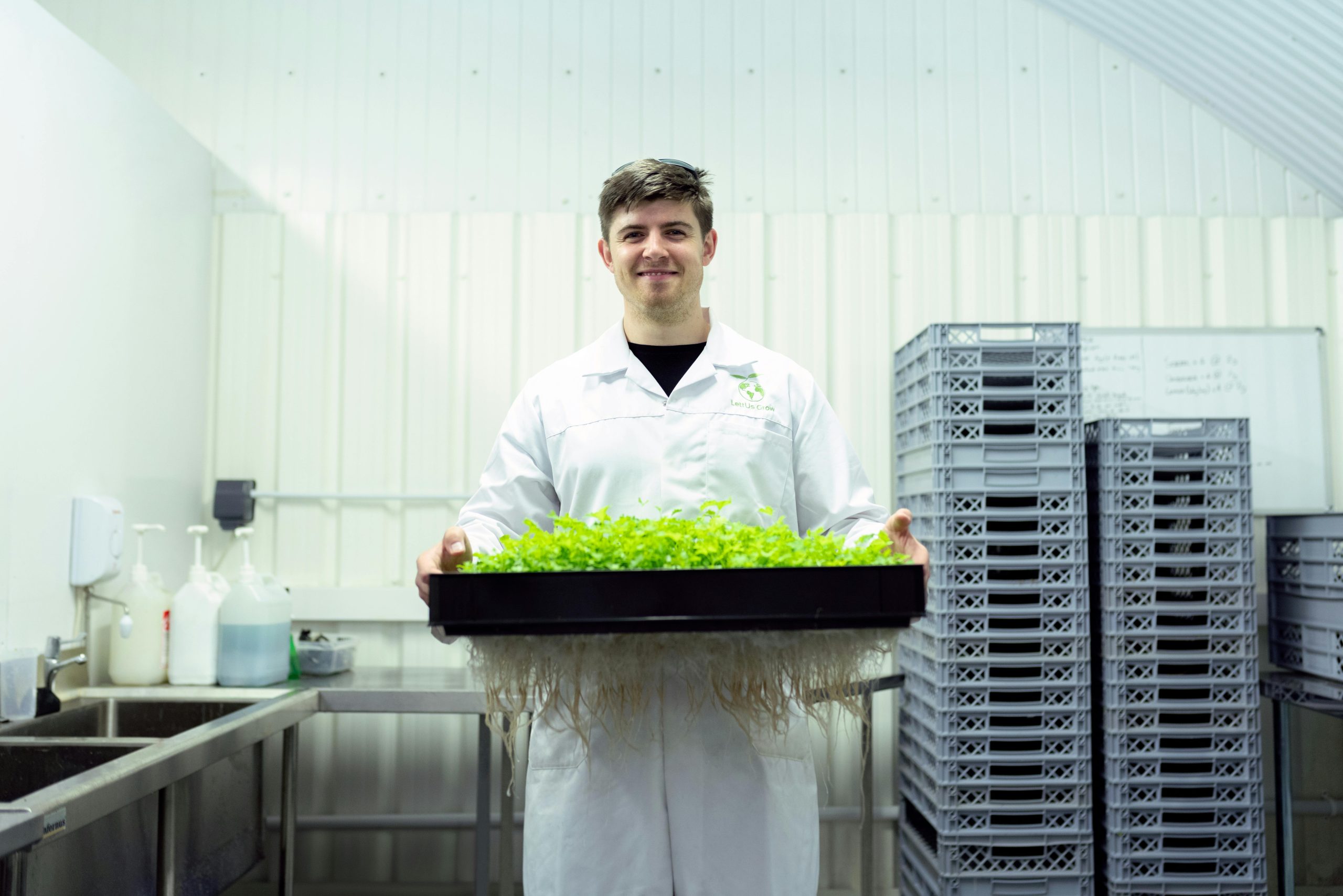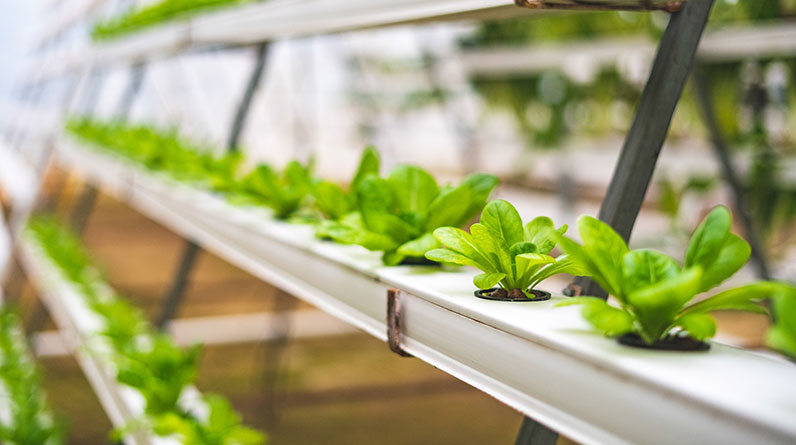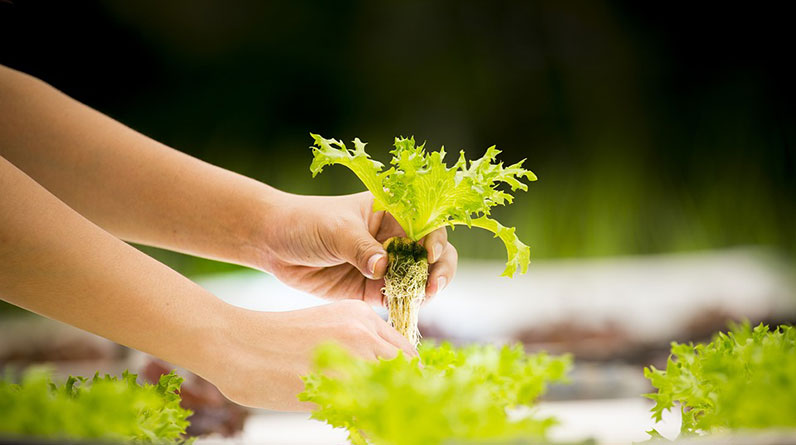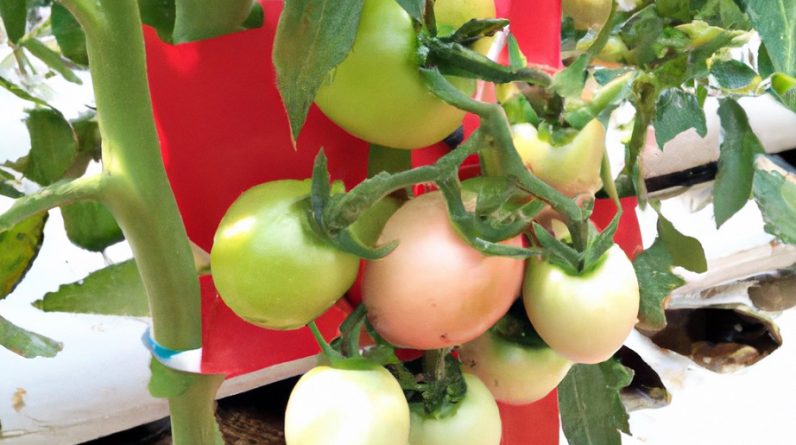
Tomatoes are one of the most widely cultivated crops in the world. They are used in countless dishes, from salads to sauces, and are a staple in many households. However, traditional methods of growing tomatoes can be time-consuming, labor-intensive, and require a significant amount of space. That’s where the tomato hydroponic system comes in.
The tomato hydroponic system is a method of growing tomatoes without soil. Instead, the plants are grown in a nutrient-rich solution that provides all the necessary nutrients for growth. This system has many advantages over traditional methods of growing tomatoes. It requires less space, less water, and can produce higher yields. Additionally, it allows for year-round production, making it a viable option for farmers in any climate.
One of the biggest advantages of the tomato hydroponic system is its efficiency. Because the plants are grown in a controlled environment, they can be closely monitored for any issues. This means that problems can be addressed quickly, resulting in healthier plants and higher yields. Additionally, the system allows for precise control over the nutrient levels in the solution, ensuring that the plants receive exactly what they need for optimal growth.
Another advantage of the tomato hydroponic system is its sustainability. Because the system uses less water and requires fewer pesticides than traditional methods of growing tomatoes, it is more environmentally friendly. Additionally, because the plants are grown in a controlled environment, there is less risk of disease and pests, reducing the need for harmful pesticides.
As you can see, the tomato hydroponic system has many advantages over traditional methods of growing tomatoes. In the following sections, we will explore the different types of hydroponic systems, the best nutrients for growing tomatoes, and how to set up your own tomato hydroponic system. Stay tuned to learn more!
What Is a Tomato Hydroponic System?
If you’re interested in growing tomatoes without soil, a tomato hydroponic system might be just what you need. Hydroponics is a method of growing plants using nutrient-rich water instead of soil. With a tomato hydroponic system, you can grow healthy, delicious tomatoes year-round, no matter where you live.
One of the benefits of using a hydroponic system for growing tomatoes is that it allows you to control the nutrients and pH levels that your plants receive. This means you can tailor the growing environment to meet the exact needs of your tomato plants, resulting in healthier, more productive plants.
There are several different types of hydroponic systems that can be used to grow tomatoes, including deep water culture, drip irrigation, and nutrient film technique. Each system has its own advantages and disadvantages, so it’s important to choose the one that best fits your needs and budget.
When setting up a tomato hydroponic system, you’ll need to choose the right type of container, growing medium, and nutrient solution. You’ll also need to monitor the pH and nutrient levels regularly to ensure that your plants are getting the right amount of nutrients.
Overall, a tomato hydroponic system can be a great way to grow fresh, healthy tomatoes year-round. Whether you’re a seasoned gardener or just starting out, hydroponics can provide a fun and rewarding way to grow your own food. So why not give it a try and see what kind of results you can achieve?
How Does It Work?
 Tomato hydroponic systems are becoming increasingly popular for growing tomatoes. Hydroponics is a method of growing plants without soil, using a nutrient-rich water solution instead. This system can be used to grow tomatoes in a controlled environment, which can result in healthier plants and higher yields.
Tomato hydroponic systems are becoming increasingly popular for growing tomatoes. Hydroponics is a method of growing plants without soil, using a nutrient-rich water solution instead. This system can be used to grow tomatoes in a controlled environment, which can result in healthier plants and higher yields.
The first step in setting up a tomato hydroponic system is to choose the right type of system. There are several different types of systems to choose from, including deep water culture, nutrient film technique, and drip irrigation. Each system has its own advantages and disadvantages, so it’s important to choose the one that’s right for your needs.
Once you’ve chosen the system, the next step is to prepare the growing medium. Hydroponic systems use a variety of growing mediums, including rockwool, coconut coir, and perlite. The growing medium provides support for the plants and helps to retain moisture and nutrients.
After preparing the growing medium, it’s time to plant the tomatoes. The plants should be placed in the growing medium and supported with stakes or trellises. The nutrient-rich water solution is then circulated through the system, providing the plants with the necessary nutrients and water.
One of the benefits of using a hydroponic system for growing tomatoes is that it allows for precise control over the growing environment. The temperature, humidity, and nutrient levels can all be adjusted to optimize plant growth and yields.
In conclusion, the tomato hydroponic system is a great way to grow healthy, high-yielding tomato plants. By choosing the right system, preparing the growing medium, and providing the plants with the necessary nutrients and water, you can enjoy a bountiful harvest of delicious tomatoes.
What Are the Benefits?
Tomatoes are a staple in many households, but growing them can be a challenge. Traditional methods of growing tomatoes require soil, space, and a lot of maintenance. However, with a tomato hydroponic system, you can enjoy fresh, delicious tomatoes without the hassle.
One of the main benefits of a tomato hydroponic system is that it requires less space than traditional gardening. This is because hydroponic systems allow you to grow plants vertically, which means you can grow more plants in a smaller area. Additionally, hydroponic systems don’t require soil, which means you don’t have to worry about soil-borne diseases or pests.
Another benefit of a tomato hydroponic system is that it allows you to control the environment in which your plants grow. This means you can adjust the temperature, humidity, and nutrient levels to ensure your plants are getting exactly what they need to thrive. With traditional gardening, you’re at the mercy of the weather and soil conditions, which can be unpredictable.
Additionally, hydroponic systems use less water than traditional gardening methods. This is because the water in a hydroponic system is recirculated, which means you don’t have to constantly water your plants. This is not only more environmentally friendly, but it can also save you money on your water bill.
Overall, a tomato hydroponic system offers many benefits over traditional gardening methods. From saving space to allowing you to control the environment, a hydroponic system can help you grow healthy, delicious tomatoes with ease.
What Are the Different Types?
When it comes to tomato hydroponic systems, there are several different types to choose from. Each type has its own advantages and disadvantages, so it’s important to do your research before deciding which one is right for you.
One of the most popular types of tomato hydroponic systems is the nutrient film technique (NFT). This system involves a thin film of nutrient-rich water flowing over the roots of the plants. It is a relatively simple and low-maintenance system that is great for beginners.
Another common type of hydroponic system is the drip system. In this system, a drip line delivers a steady supply of nutrient-rich water to the plants. This system is more complex than the NFT system, but it allows for greater control over the nutrient levels and water flow.
The ebb and flow system, also known as the flood and drain system, is another popular option. In this system, the plants are periodically flooded with nutrient-rich water, which then drains away. This system is great for larger plants and can be automated for even greater convenience.
Aeroponics is a more advanced type of hydroponic system that involves suspending the plants in the air and misting them with nutrient-rich water. This system requires more maintenance and attention, but it can yield impressive results.
Finally, there is the deep water culture system, which involves suspending the plants in a nutrient-rich water solution. This system is simple and low-maintenance, but it can be difficult to control the nutrient levels and pH balance.
In conclusion, there are many different types of tomato hydroponic systems to choose from, each with its own unique advantages and disadvantages. By doing your research and considering your specific needs and preferences, you can find the perfect system to help you grow healthy, delicious tomatoes all year round.
What Are the Required Nutrients?
Tomatoes are among the most popular crops grown using hydroponic systems. In order to grow healthy and productive tomato plants, it is important to provide them with the right nutrients. Here are the essential nutrients that tomato plants need to thrive in a hydroponic system.
First and foremost, tomato plants require nitrogen. This nutrient is responsible for leaf growth and overall plant development. In hydroponic systems, nitrogen can be supplied in the form of nitrate or ammonium.
Phosphorus is another crucial nutrient that tomato plants need. This nutrient is essential for root growth and flower production. In hydroponic systems, phosphorus can be supplied in the form of phosphate.
Potassium is also important for tomato plants. This nutrient is responsible for fruit development and overall plant health. In hydroponic systems, potassium can be supplied in the form of potassium nitrate or potassium sulfate.
Calcium and magnesium are also important nutrients for tomato plants. Calcium is needed for cell wall development, while magnesium is needed for chlorophyll production. In hydroponic systems, calcium and magnesium can be supplied in the form of calcium nitrate and magnesium sulfate.
Finally, tomato plants require trace elements such as iron, zinc, and copper. These nutrients are needed in small amounts, but they are essential for overall plant health and productivity. In hydroponic systems, trace elements can be supplied in the form of chelated micronutrients.
By providing tomato plants with the right nutrients, hydroponic growers can ensure healthy and productive plants. With the right balance of nitrogen, phosphorus, potassium, calcium, magnesium, and trace elements, hydroponic tomato growers can achieve high yields and excellent quality tomatoes.
What Are the Common Problems?
Tomato hydroponic systems are an efficient and cost-effective way to grow tomatoes. However, like any other system, they come with their own set of problems. Here are some of the most common problems faced by tomato hydroponic system growers.
One of the most common problems is the build-up of algae in the nutrient solution. Algae can clog the system and prevent the nutrients from reaching the plants. To prevent this, growers should regularly clean the system and ensure that the nutrient solution is properly balanced.
Another problem is the growth of mold and mildew on the plants. This can be caused by high humidity levels or poor air circulation. To prevent this, growers should ensure that the growing area is well-ventilated and that the plants are not overcrowded.
Nutrient deficiencies are also a common problem in tomato hydroponic systems. This can be caused by a lack of proper nutrients in the solution or an incorrect pH level. Growers should regularly test the nutrient solution and adjust it as needed to ensure that the plants are getting the right nutrients.
Pests and diseases can also be a problem in tomato hydroponic systems. Common pests include aphids, spider mites, and whiteflies, while common diseases include powdery mildew and blossom end rot. Growers should regularly inspect their plants and take appropriate measures to prevent and treat pest and disease problems.
In conclusion, while tomato hydroponic systems offer many benefits, they also come with their own set of challenges. By being aware of these common problems and taking appropriate measures to prevent and treat them, growers can ensure a successful harvest.
How Do You Maintain It?
When it comes to maintaining a tomato hydroponic system, there are a few key things to keep in mind. First and foremost, you’ll need to monitor the pH levels of your water on a regular basis. This is because tomatoes prefer a slightly acidic environment, with a pH range of 5.5 to 6.5. If the pH levels get too high or too low, it can negatively impact the growth and yield of your plants.
Another important aspect of maintenance is keeping your water and nutrient solution clean. This means regularly changing out the water and adding fresh nutrients to ensure that your plants are getting the right balance of nutrients. It’s also important to keep an eye out for any signs of algae or other unwanted growth, as this can also impact the health of your plants.
In addition to monitoring pH levels and keeping your solution clean, you’ll also need to pay attention to the temperature and humidity levels in your growing area. Tomatoes prefer a warm and humid environment, with temperatures around 70-75 degrees Fahrenheit and humidity levels around 60-70%. If the temperature or humidity levels get too high or too low, it can stress your plants and impact their growth.
Finally, it’s important to regularly prune and trim your tomato plants to ensure that they are growing in a healthy and productive manner. This means removing any dead or damaged leaves, as well as any suckers or side shoots that may be taking away from the plant’s main growth.
By following these key maintenance tips, you can ensure that your tomato hydroponic system is healthy, productive, and yielding delicious tomatoes all season long.
What Are the Best Tomato Varieties for Hydroponics?
When it comes to growing tomatoes in a hydroponic system, choosing the right variety is crucial. Not all tomato varieties are suited for hydroponic growing, as some require more space and support than others. In this article, we will explore some of the best tomato varieties for hydroponics.
One of the most popular tomato varieties for hydroponics is the cherry tomato. Cherry tomatoes are small and compact, making them ideal for hydroponic growing. They also have a high yield and are resistant to many common tomato diseases.
Another great tomato variety for hydroponics is the beefsteak tomato. Beefsteak tomatoes are larger than cherry tomatoes, but they still grow well in a hydroponic system. They have a rich, meaty flavor and are great for sandwiches and salads.
The Roma tomato is another good choice for hydroponic growing. Roma tomatoes are oval-shaped and have a thick flesh, making them ideal for making tomato sauce. They are also resistant to many common tomato diseases and pests.
If you are looking for a tomato variety that is easy to grow in a hydroponic system, the Patio tomato is a great choice. Patio tomatoes are small and compact, making them perfect for small hydroponic setups. They also have a high yield and are resistant to many common tomato diseases.
In conclusion, when it comes to growing tomatoes in a hydroponic system, there are many great varieties to choose from. Whether you prefer cherry tomatoes, beefsteak tomatoes, Roma tomatoes, or Patio tomatoes, there is a tomato variety that will thrive in your hydroponic setup.
In conclusion, a tomato hydroponic system is an innovative way to grow tomatoes without soil. This system works by providing the necessary nutrients directly to the plant’s roots through water. The benefits of this system include higher yields, faster growth, and less water usage. There are different types of hydroponic systems, including DWC, NFT, and drip systems, each with its own advantages and disadvantages.
To maintain a successful hydroponic system, it is important to provide the necessary nutrients, including nitrogen, phosphorus, and potassium. Common problems include pH imbalances and nutrient deficiencies, which can be resolved through regular monitoring and adjustments.
When it comes to choosing the best tomato varieties for hydroponics, it is important to consider factors such as disease resistance, fruit size, and taste. Some popular varieties include Beefsteak, Cherry, and Roma tomatoes.
As for the future of tomato hydroponic systems, we can expect to see continued advancements and innovations in technology, leading to even more efficient and sustainable systems.
To ensure success with a tomato hydroponic system, it is important to maintain proper nutrient levels, monitor pH levels, and regularly check for any signs of plant stress. With the right care and attention, anyone can enjoy a bountiful harvest of fresh, delicious tomatoes.
Thank you for reading this post, and we encourage you to leave any comments or feedback. Happy growing!


